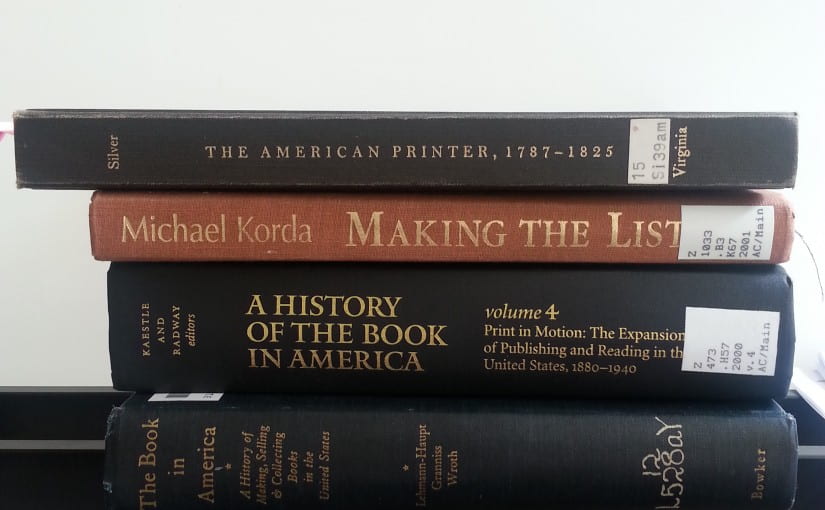Last week, we interns had free reign to do our own research relating to a digital project proposal for the KWE Native American book collection. This meant lots of time exploring different books and articles related to Native American studies and digital humanities tools that could be useful for our digital project. I broke up my time reading and gathering info on two broad subjects that tended to overlap as I began to hone in on what I was interested in. In the one corner, there was Native American literary history. In the other, studies related to the history of American publishing and of American print culture. In many ways it was a week of info dumping- searching catalogs for articles, skimming said articles, checking bibliographies, looking up books… you get the idea. With that said, I think an important take away from this is that there is so much to learn about the fields I’m looking at. That can be daunting, but it’s also cool to be exposed slowly but surely to something new. Anyway, I have a few more takeaways that might be best served as questions.
- On the broadest level, how do we talk about the history of the Native American book (can similarly be asked of other historically marginalized groups) in relation to that of the ‘American’ book (ie, white)?
- How we can discuss the tension between the imposition of European language on Native American groups? Should we look to complicate the idea by interpreting the adoption of English and other languages as means of exerting some agency or positive expression (and not just Euro-American linguistic whitewashing)?
- If the 19th century was seen as a period in American history where the nation sought to establish its own identity, what can be said for the fact some pretty terrible things happened around then (Indian removal efforts, the rise of American minstrelsy and expansion of slavery in the American west to name a few)? This is a leading question if there ever was one, but still.
- Does the book as a form of communication run counter to Native American cultural expressions of history since with the book comes a certain linearity not necessarily found in oral forms of storytelling? What is the place of the book for Native Americans then?
Again, these are just my notes after reading much more in depth analyses of these issues. In the coming weeks, we as a group might be able to put what we’ve been reading for this internship up, for any interested readers to explore further.
